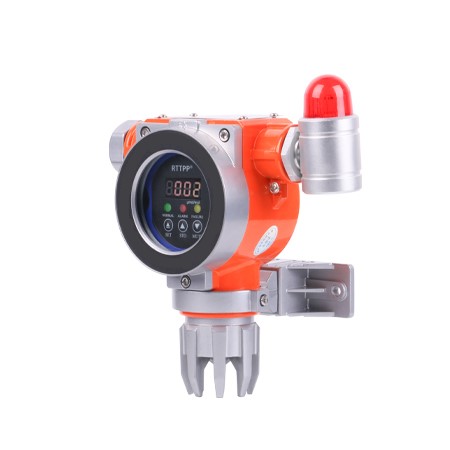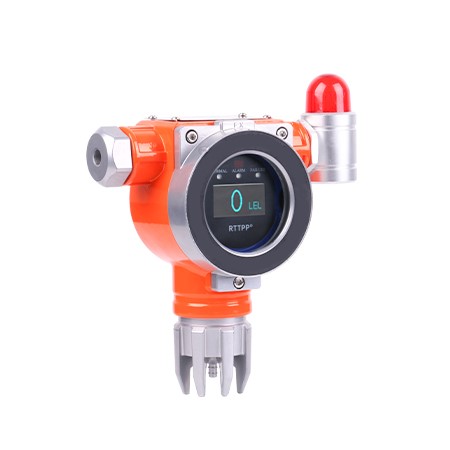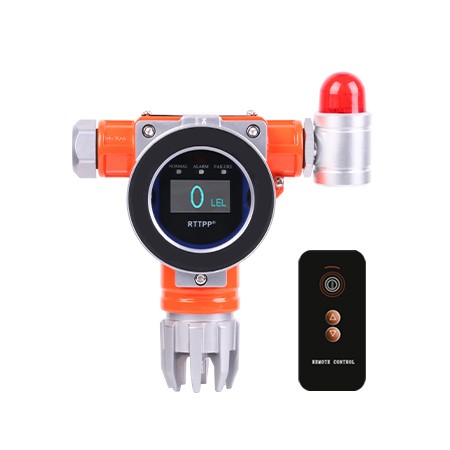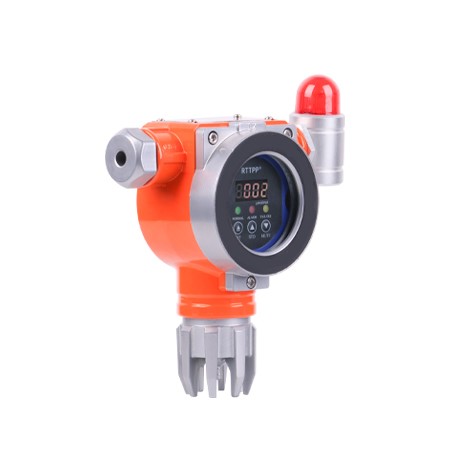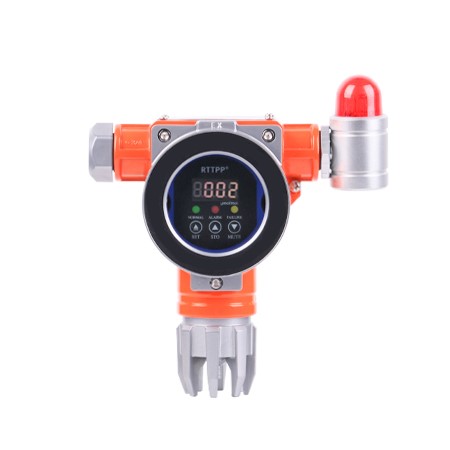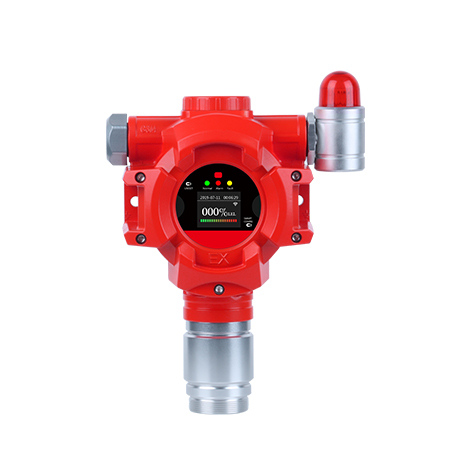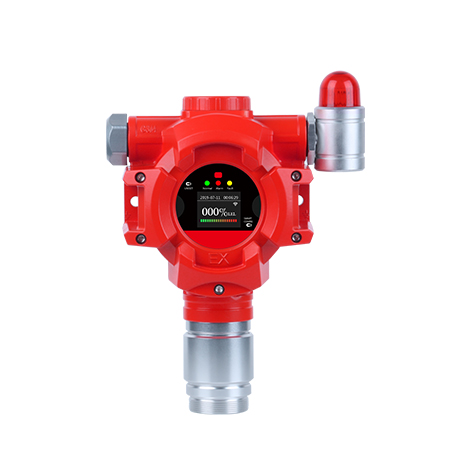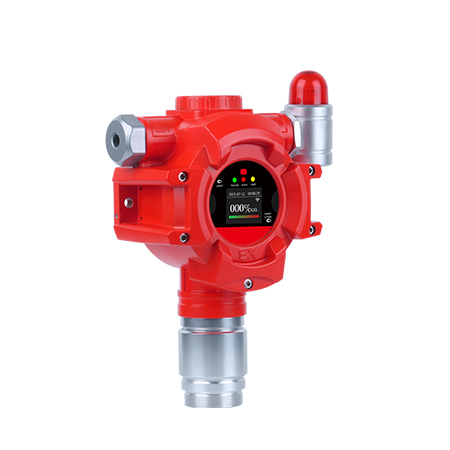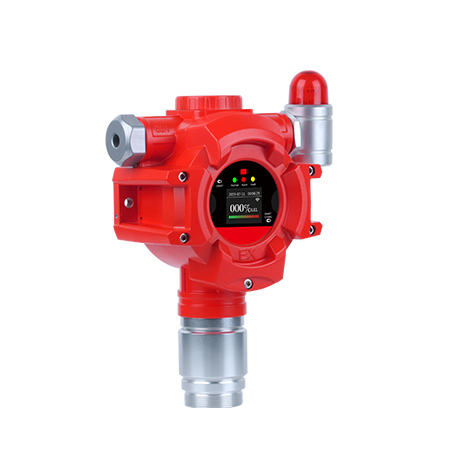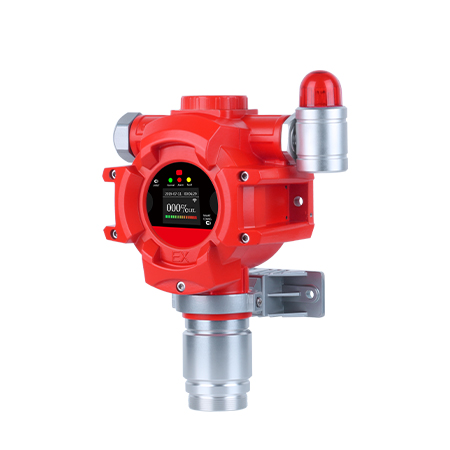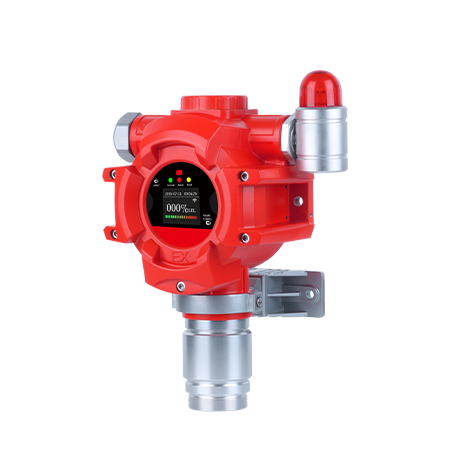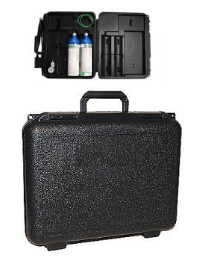Description
SRS develops 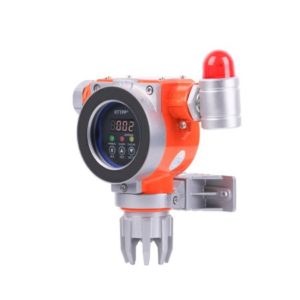 and manufactures many kinds of Fixed LEL Sensors/gas alarm detectors, based on signal out 4-20mA, RS485, and RS232; based on the display, have LCD, LED, and no display.
and manufactures many kinds of Fixed LEL Sensors/gas alarm detectors, based on signal out 4-20mA, RS485, and RS232; based on the display, have LCD, LED, and no display.
Which kind should be chosen? It depends on the gas detected, the working environment, and the terminal equipment.
Enhancing Safety in Hazardous Environments
In industrial settings where flammable gases and vapors are present, safety becomes a paramount concern. To address this, LEL sensors (Lower Explosive Limit) have been developed as a crucial component of gas detection systems. These sensors are designed to detect the presence of gases within a specific concentration range that could potentially lead to an explosion or fire. In this article, we will explore LEL sensors in detail, focusing on their functionality, types, applications, and benefits.
How LEL Sensors work
To begin with, it is essential to understand how instruments work. The sensors operate on the principle of catalytic combustion or infrared absorption to detect flammable gases. In the catalytic combustion method, the sensor contains a catalyst that reacts with the gas, causing it to burn. This combustion process generates heat, which is measured by the sensor to determine the gas concentration. On the other hand, infrared absorption sensors use infrared light to identify the presence and concentration of flammable gases, monitoring the amount of light absorbed by the gas in question.
Now that we have discussed the working principle of “sniffing” sensors, let’s delve into the different types available.
Different Types
There are various types of “sniffing” sensors, each suitable for specific applications. Firstly, catalytic bead sensors are commonly used due to their cost-effectiveness and versatility. They consist of a bead or pellet made of a material such as platinum that acts as a catalyst for the combustion reaction. These sensors are ideal for detecting a wide range of flammable gases and vapors.
Moving on from catalytic bead sensors, another type worth mentioning is the infrared sensor.
Infrared LEL sensors utilize infrared light to measure gas concentrations. Unlike catalytic bead sensors, infrared sensors do not rely on combustion but on the absorption of infrared light by the gas molecules. They offer high accuracy and are particularly useful in environments with high levels of hydrocarbon gases since they don’t require oxygen for detection. Furthermore, they are highly resistant to poisoning and sensor burnout, making them a reliable option for long-term monitoring.
Having discussed the different types of LEL sensors, let’s consider their applications.
Applications
LEL sensors find widespread applications across various industries. In the oil and gas sector, “sniffing” sensors are crucial for detecting hydrocarbon gases during drilling, refining, and transporting processes. Chemical plants rely on the sensors to monitor the presence of flammable gases and prevent potential accidents. Additionally, the sensors are used in confined spaces, such as storage tanks or vessels, where the accumulation of flammable gases can pose serious risks to personnel.
Now that we have explored the applications, let’s focus on the benefits of instruments.
The implementation of LEL sensors brings numerous benefits in terms of workplace safety. Firstly, LEL sensors provide early detection of flammable gases, allowing workers to take immediate action before a hazardous situation escalates. By continuously monitoring gas concentrations, these sensors provide real-time data that enables proactive measures to prevent accidents. Furthermore, LEL sensors offer high accuracy, ensuring reliable readings and reducing false alarms. LEL sensors play a vital role in enhancing safety in hazardous environments.
Catalytic Bead or Infrared?
LEL sensors, whether catalytic bead or infrared, are valuable tools in detecting flammable gases and preventing potential explosions or fires. Their ability to provide accurate and real-time data empowers workers to make informed decisions and take preventative measures. With their widespread applications across diverse industries, LEL sensors have become an indispensable component of gas detection systems. Investing in LEL sensors not only protects personnel but also safeguards assets and mitigates the potential losses associated with accidents in hazardous environments.
Now that we have covered the various aspects of LEL sensors, it is important to acknowledge some potential limitations and advancements in this technology.
Limitations of LEL Sensors
While LEL sensors are highly effective in detecting flammable gases, it is essential to recognize that they have certain limitations. For instance, LEL sensors may not be suitable for detecting gases with low flammability limits or those that are less reactive. Additionally, different types of LEL sensors have specific requirements when it comes to environmental conditions, such as temperature and humidity, which could affect their accuracy and performance.
Furthermore, it is worth mentioning that the technology surrounding LEL sensors is continually advancing. With each iteration, the sensors become more sensitive, precise, and resistant to environmental factors. Innovations in materials and manufacturing techniques are making LEL sensors more robust and reliable, reducing maintenance requirements and improving their overall lifespan.
In recent years, advancements in artificial intelligence have also led to the integration of smart features in LEL sensors.
Artificial Intelligence (AI)
Artificial intelligence (AI) algorithms have made it possible for LEL sensors to analyze and interpret data, providing enhanced functionality beyond simple gas detection. These smart sensors can now perform predictive analytics, identifying patterns and abnormalities in gas concentration levels to anticipate potential hazards before they occur. Additionally, AI-powered sensors can be integrated into overall safety management systems, allowing for centralized monitoring and control, as well as generating automated alerts and reports. In conclusion, the sensors continue to evolve as a critical component in ensuring safety in hazardous environments.
LEL sensors, with their ability to detect flammable gases and monitor gas concentrations, have become indispensable tools across various industries. Their functionality, accuracy, and real-time data provide a proactive approach to mitigating risks and preventing accidents. With ongoing advancements in technology, including the integration of artificial intelligence, sensors are becoming more intelligent, efficient, and seamlessly integrated into safety management systems. As industries prioritize worker safety and the prevention of hazardous incidents, sensors offer invaluable support in maintaining a secure working environment.
Indispensable
Additionally, LEL sensors are indispensable in promoting safety and mitigating risks in environments prone to the presence of flammable gases.
Through their catalytic combustion or infrared absorption methods, the sensors play a critical role in detecting and monitoring gas concentrations. Their versatile functionality and various types allow for their adaptation to specific applications. By continuously monitoring gas concentrations, sensors provide early detection and reliable data, enabling proactive measures to be taken before a hazardous situation escalates.
As technology advances, The instruments are becoming smarter, offering features such as predictive analytics and integration with safety management systems. Ultimately, investing in sensors is not only an investment in workplace safety but also in the protection of personnel. It also protects assets and the prevention of potential losses associated with accidents in hazardous environments.
Although LEL sensors have made significant contributions to workplace safety, it is important to note that they are just one aspect of a comprehensive safety program.
Other Safeties
While LEL sensors can detect the presence of flammable gases, it is crucial to have other safety measures in place to mitigate the risks associated with these gases. This includes proper ventilation systems, personal protective equipment, and training programs for employees to identify and respond to potential hazards. Utilizing sensors in conjunction with these measures creates a multi-layered approach to safety, ensuring the highest level of protection in hazardous environments.
Additionally, it is important to regularly maintain and calibrate the sensors to ensure their optimal performance.
Calibration of LEL Sensors
To maintain accurate and reliable readings, sensors should undergo regular calibration to compensate for any drift or changes in sensitivity. This calibration process involves comparing the sensor’s response to known calibration gases of varying concentrations. Regular maintenance, such as cleaning the sensors and inspecting their components, is also necessary to prevent false readings or malfunction.
Lastly, it is worth mentioning the importance of staying updated with the latest safety regulations and industry standards related to sensors.
Safety regulations and standards regularly evolve to address new hazards and improve workplace safety. Organizations need to stay up-to-date with these changes and ensure their sensors comply with the latest requirements. This may involve periodic assessments and audits to verify the effectiveness and accuracy of the sensors.
In conclusion, sensors are a vital component in enhancing safety in hazardous environments. Additionally, they should be integrated with other safety measures and regularly maintained to ensure optimal performance.
Looking for Calibration equipment?
Not what you are looking for? Other Products Click Here!
Specifications
Product parameters
<td>DC24V</td> calender display,can save 3000+ alarm records.</tr>Explosion-proof number
<td>Size<td>- 20 ℃ ~ 50 ℃<td>Humidity
<td>LCD display<td>Time,</td><tr>Temperature range
rong>Parameters0mA (RS485 digital signal is optianal)<tr>Additional feature</td>
<td>4-2re or three wire, three wire system can output a set of relay switch signal</td>
<tr>Output signal</td>
| Name</td> |
<st |
| Product name |
CE, ATEX Fixed LCD multi LEL CO, H2S, O2 sensor, 4 gases detector</td> |
| 142mm *178.5mm * 91mm |
| Weight |
about 1350g |
| Sensor types</td> |
electrochemistry, catalytic combustion type |
| Destination gas |
O2, EX, CO, H2S, other poisonous and harmful gases also can be combined |
| Measure range and precision |
LEL:0-100%lel 1%lel
O2:0-30%vol 0.%vol
CO:0-2000ppm 1ppm
H2S:0-200ppm 1ppm
</td> |
| Response time |
≤30s(O2);≤40s(CO,H2S);≤20s(EX) |
| Working pattern</td> |
continuous work |
| Working voltage |
| Display |
| Output way</td> |
two wi |
| 15% ~ 90% RH (No condensation) |
| CE10 1084 |
| Explosion-proof marks |
Exd II CT6 |
| Control signal |
Switch output, the maximum load 250 V AC 3A(optional) |
| Connection mode |
according to the instruction |
| Transmission distance |
< 1000 m |
Gas Parameters
/td><td>1ppm<td>35ppm</td>pm<td>70ppm</td><td>1ppm
ppm<td>1ppm</td>70ppm</tr></table>
/td></tr><td>CL2</td></td>0-20</td>C6H6</td>
<td>Measure Range0.01%vol50ppm<</tr><td>10ppm</td><tr>SO2</td>0-100ppm1ppm5ppm10ppmm<td>ETO<td>0-100ppm
l00ppm<td>1ppm</td>td><td>20ppmm</td><td>20ppm</td>
<td>25%lel</td><td>CO2<td>H2S</td><td>CO</td>0-2000ppm10pp</td>
<td><90%vol<tr>0-50000ppm</td>1ppm<2000ppm5000ppm
| Detected gas</strong> |
Resolution |
<strong>Alarm point Ⅰ |
Alarm point </strong>Ⅱ |
| EX |
0-100%lel |
1%lel |
50%lel |
| O2 |
0-30%vol |
0.1%vol |
<18%vol</td> |
>23%vo |
| N2 |
70-100%vol |
0.1%vol |
>82%vol |
| CO2 |
0-5%vol |
0.2%vol |
0.5%vol |
| 0-2 |
1ppm |
5ppm |
10ppm |
| 150ppm |
| NO |
0-250ppm</td> |
1ppm</ |
10ppm |
| NO2 |
0-20ppm |
1ppm |
5ppm |
| 2ppm |
4ppm |
| H2 |
0-1000ppm |
| NH3 |
0-200ppm |
1ppm</td> |
35p |
| PH3 |
0-20ppm |
1ppm |
10ppm |
20ppm |
| HCL |
0-20ppm |
1ppm |
2ppm |
4ppm |
| O3 |
0-50ppm |
1ppm |
2ppm |
4ppm |
| CH2O |
0-100ppm |
1ppm |
5ppm |
10ppm |
| HF |
0-10ppm |
1ppm</td> |
5pp |
| VOC |
0-100ppm |
1ppm</td> |
10ppm |
| 1ppm |
10ppm |
20ppm |
| 0-100ppm |
5ppm |
10ppm |
Q&A
A Q&A with Gas Sensors, which stands for “question and answer for Gas Sensors,” is a format commonly used to facilitate communication and exchange of information. In a Q&A with Gas Sensors, one person asks a question, and another person or group provides an answer or response to that question. This format is widely used in various contexts, such as interviews, discussions, presentations, or online forums. It allows for a structured and organized way of addressing inquiries and obtaining relevant information. Is there anything specific you would like to know about Q&A with Gas Sensors?
Q: What is a Gas Sensor?
A: A gas sensor is a device that detects and measures the presence and concentration of gases in the air or a particular environment.
<!– wp:heading {“level”:3,”fontSize”:”medium”} –>
>Q: How do Gas Sensors work?
A: Gas sensors work based on different principles depending on the type of gas being detected. For example, some gas sensors use a chemical reaction to detect the presence of a specific gas, while others rely on the absorption or reflection of light. Most gas sensors contain a sensing element that responds to the presence of gas by producing an electrical signal that can be read and interpreted by a detector.
Q: What gases can be detected using Gas Sensors?
A: Gas sensors can detect a wide range of gases, including carbon monoxide, methane, hydrogen, ammonia, and many others.
Q: Where are Gas Sensors used?
A: Gas sensors are used in a variety of applications, including industrial processes, indoor air quality monitoring, environmental monitoring, and safety and security systems. They are also commonly used in homes, schools, and other public buildings to monitor for the presence of harmful gases.
Q: How accurate are Q&A with Gas Sensors?
A: The accuracy of gas sensors can vary depending on the type of sensor and the gas being detected. Some sensors are highly accurate and can detect even trace amounts of gas. Other types of sensors may have lower sensitivity and accuracy. It is important to select the appropriate sensor for the specific application to ensure accurate results.
Q: How often do Gas Sensors need to be replaced?
A: Q&A with Gas Sensors typically have a finite lifespan and will need to be replaced periodically. The lifespan of a sensor can vary depending on factors such as the type of gas being detected. Also, the lifespan is impacted by the environment in which the sensor is operating, and the frequency of use. It is important to follow the manufacturer’s recommendations for replacing sensors to ensure that they continue to provide accurate readings.
Q: Can Gas Sensors be calibrated?
<!– /wp:heading –>
A: Yes, gas sensors can be calibrated to ensure accurate readings. Calibration involves comparing the output of the sensor to a known reference gas or concentration, and adjusting the sensor output as needed. Calibration should be performed regularly to ensure that the sensor is providing accurate and reliable readings.
Q: Can Gas Sensors be used in hazardous environments?
A: Yes, gas sensors can be used in hazardous environments, but it is important to select sensors that are rated for use in those environments. Most importantly, you must follow all safety protocols and regulations. In some cases, sensors may need to be intrinsically safe to prevent the risk of ignition or explosion.
Q: Are Gas Sensors easy to install and use?
A: Gas sensors can be relatively easy to install and use, depending on the type of sensor and the application. Some sensors are designed for plug-and-play installation and require little to no configuration. Other types may require more complex installation and calibration procedures. It is important to carefully follow the manufacturer’s instructions and recommendations for installation and use to ensure that the sensor is working correctly.
s=”wp-block-heading has-medium-font-size”>Q: Can Gas Sensors detect all types of gases?
A: No, gas sensors are designed to detect specific gases or groups of gases. Different types of gas sensors are optimized for different gases, such as carbon monoxide, methane, hydrogen sulfide, and oxygen. Some gas sensors can detect multiple gases, but there is no universal gas sensor that can detect all types of gases.
Q: How do Gas Sensors work?
A: Gas sensors work by detecting the presence of a particular gas in the air. There are several different types of gas sensors. However, most work by measuring changes in electrical conductivity, optical absorption, or electrochemical reactions. This occurs when a gas interacts with the sensor material. When a gas is present, it interacts with the sensor in a way that produces a measurable signal that can be used to determine the concentration of the gas.
Q: Are Gas Sensors accurate?
A: Gas sensors can be very accurate when they are properly calibrated and maintained. However, their accuracy can be affected by factors such as temperature, humidity, and other gases in the environment. It is important to follow the manufacturer’s instructions for calibration and maintenance to ensure accurate readings.
Q: How often do gas sensors need to be calibrated?
A: Gas sensors should be calibrated regularly to ensure accurate readings. The frequency of calibration depends on several factors, including the type of gas sensor, the environment in which it is used, and the level of accuracy required. Some gas sensors may need to be calibrated daily or weekly, while others may only need to be calibrated once a year.
Q: How can Gas Sensors be used to improve safety?
A: Gas sensors can be used to improve safety by detecting the presence of harmful gases in the environment. In industrial settings, gas sensors can be used to monitor the levels of toxic gases and alert workers if the concentrations exceed safe levels. Gas sensors can also be used in homes to detect the presence of carbon monoxide, a deadly gas that is produced by gas-fired appliances.
Q: What factors should be considered when selecting a Gas Sensor?
A: When selecting a gas sensor, it is important to consider factors such as the type of gas to be detected. It is also important to know the concentration range of the gas, the operating environment, and the required level of accuracy. Other factors to consider may include the cost of the sensor, its size and weight, and its power requirements. It is also important to select a sensor that is appropriate for the application and that meets any relevant regulatory requirements.
Q: What are some common types of Gas Sensors?
A: There are several types of gas sensors, including electrochemical sensors, catalytic sensors, infrared sensors, and photoionization detectors (PIDs).
Q: What gases can Gas Sensors detect?
A: The gases that gas sensors can detect depend on the type of sensor. For example, electrochemical sensors are commonly used to detect gases such as carbon monoxide, hydrogen sulfide, and oxygen. Also, infrared sensors can detect gases such as methane, carbon dioxide, and refrigerants.
Q: How do Gas Sensors work?
A: The way a gas sensor works depends on the type of sensor. Electrochemical sensors use a chemical reaction to produce an electrical signal that corresponds to the gas concentration. While catalytic sensors use a heated catalyst to promote a reaction between the gas and oxygen. Infrared sensors use the absorption of infrared radiation by the gas molecules to detect their presence. Other types like the PID sensors use an ionization process to detect volatile organic compounds (VOCs).
Q: How accurate are Gas Sensors?
A: The accuracy of gas sensors depends on the type of sensor and the specific gas being detected. In general, gas sensors have a range of accuracy, with some being more precise than others. It is important to select the appropriate sensor for the specific gas being detected. Once you find the appropriate sensor, you must calibrate the sensor regularly to ensure accurate readings.
Q: How often should Gas Sensors be calibrated?
A: The frequency of calibration depends on the type of sensor and the environment in which it is being used. It is recommended to calibrate gas sensors at least once every six months. Also good to know is that the sensors in harsh or extreme environments may require more frequent calibration.
Q: Can Gas Sensors be used in hazardous environments?
A: Yes, gas sensors can be used in hazardous environments, but it is important to select a sensor that is specifically designed for the environment. As a result, it is also important to follow all safety procedures and guidelines. Some gas sensors are intrinsically safe, meaning they are designed to prevent the ignition of explosive gases in hazardous environments.
Q: What should I consider when selecting a Gas Sensor?
A: When selecting a gas sensor, it is important to consider the specific gas being detected, and the accuracy and sensitivity of the sensor. In addition, the environment in which it will be used, and any regulations or guidelines that must be followed. It is also important to choose a reputable manufacturer and to ensure that the sensor is properly installed and calibrated.
Q: Can Gas Sensors be used for indoor air quality monitoring?
A: Yes, gas sensors can be used for indoor air quality monitoring to detect harmful gases such as carbon monoxide and VOCs. However, it is important to select a sensor that is specifically designed for indoor use. It is also important to follow all safety procedures and guidelines.
Buy Gas Sensors
Calibration
The calibration of gas detectors is essential in ensuring their accuracy and reliability, which is critical for safety in various industries. Gas detectors are used to detect and monitor the presence of gases and vapors. This includes flammable gases, toxic gases, and oxygen deficiency, in workplaces and other environments. Here are some examples of how the calibration of gas detectors is important in various industries.
Chemical and petrochemical industry
In the chemical and petrochemical industry, gas detectors are used to monitor the presence of toxic and flammable gases. These gases such as hydrogen sulfide and methane, can be released during the production process. Accurate calibration of gas detectors is essential in ensuring that workers are alerted in case of a gas leak or buildup. This is to prevent accidents and ensure workplace safety.
Oil and gas industry
Gas detectors are used extensively in the oil and gas industry to monitor the presence of flammable and toxic gases in drilling rigs, refineries, and pipelines. Calibration of gas detectors is critical in ensuring that workers are protected from the risks associated with gas leaks and spills, such as explosions and fires.
Mining industry
Gas detectors are used in the mining industry to monitor the presence of gases, such as carbon monoxide and methane. This can accumulate in underground mines and pose a serious threat to workers. Calibration of gas detectors is essential in ensuring that workers are alerted to the presence of dangerous gases. You must take appropriate action to avoid exposure.
Education and research
Gas detectors are also used in educational and research settings to teach students and researchers about the properties and behavior of various gases. Calibration of gas detectors is important in ensuring that accurate data is collected and analyzed. this enables students and researchers to develop a better understanding of gas behavior and safety protocols.
Flammable gas storage and handling
Gas detectors are used in facilities where flammable gases are stored or handled, such as in laboratories, chemical plants, and refineries. Calibration of gas detectors is critical in ensuring that workers are alerted to the presence of flammable gases. This is preventing accidents, and ensuring workplace safety.
In summary, calibration of gas detectors is critical in ensuring accurate and reliable detection of gases and vapors in various industries. This includes chemical and petrochemical, oil and gas, mining, education and research, and flammable gas storage and handling. Accurate detection and monitoring of gases are essential for maintaining workplace safety and preventing accidents.
Why is it important?
Calibration of Gas Detectors is important as a gas detector is a device that detects the presence of gases in an area, often as part of a safety system. This type of equipment is used to detect a gas leak and interface with a control system so a process can be automatically shut down. A gas detector can sound an alarm to operators in the area where the leak is occurring. This is to allow them to leave. This type of device is important because many gases can be harmful to organic life. Organic life such as humans or animals.
Gas detectors can be used to detect combustible, flammable, and toxic gases and oxygen depletion. This type of device is used widely in industry and can be found in locations, such as on oil rigs. They use it to monitor manufacturing processes and emerging technologies such as photovoltaics. They may be used in firefighting.
<!– wp:paragraph {“fontSize”:”medium”} –>
Gas leak detection is the process of identifying potentially hazardous gas leaks by sensors. These sensors usually employ an audible alarm to alert people when a dangerous gas has been detected. Common sensors include infrared point sensors, ultrasonic sensors, electrochemical gas sensors, and semiconductor sensors. More recently, infrared imaging sensors have come into use. All these sensors are used for a wide range of applications and can be found in industrial plants, refineries, waste-water treatment facilities, vehicles, and homes.
Calibration of Gas Detectors
<!– /wp:heading –>
When the Gas detector powers up, it will take an initial power-up period of 1 minute approximately and is observed during which it displays “PU”. This is to allow the sensor to stabilize, then the display should read ‘0’ if there is no gas present at the sensor. If this doesn’t occur then refer to the manual book, in the section troubleshoot.
Calibration of Gas Monitors
Ensure that the Gas Sensor has stabilized for at least 1 hour, and there is no combustible gas present at the sensor. A true zero reading will be obtained when the reading stabilizes at a lower value.
<!– wp:paragraph {“fontSize”:”medium”} –>
Place the magnet over the General Monitors logo at the surface body. ‘–‘ will appear on the display first to indicate that the magnet has been positioned correctly. Then the display will begin to flash. After a total of 9 seconds ‘AC’ will be displayed, indicating that the unit is in the auto-calibration, then remove the magnet.
Use a General Monitors Portable Purge or Calibration Chamber to apply gas at 50% LEL (+/-5%) to the sensor. When the gas sensor detects this gas it will display ‘CP’, which means ‘CP’ = CALIBRATION IN PROGRESS
Wait until ‘CC’ is displayed before removing gas. This will normally take less than 2 minutes, ‘CC’ = CALIBRATION COMPLETE
When the gas disperses from the sensor the gas sensor will leave CALIBRATION MODE and return to a normal monitoring condition. The display should read ‘0’ when the gas has dispersed.
If the above does not occur as described and a different code is displayed. go to the TROUBLESHOOTING section.
Calibration Check
After performing calibration on the Gas detector then will continue to perform calibration checks:
- Position the magnet over the Monitors logo, the symbol ‘–‘ will be displayed for three seconds and then will begin to flash
- Remove the magnet and the display will now flash the gas concentration at the sensor. The analog output will be held at 1.5mA regardless of the gas concentration at the sensor.
- If gas is not applied within 6 minutes the analog output will fall to 0mA and the display will read ‘F2’. To recover from this position, replace the magnet over the Monitors Logo, repeat steps 1 and 2 then proceed to step 4 within the timeout period.
- Apply gas at 50% LEL to the sensor. Observe that the gas reading settles at 50+/-5%. Should the final response fall outside this limit, a full calibration is required.
- Note: The sensor should be exposed to clean air conditions for at least two minutes before entering calibration mode.
- The display will continue to flash and the analog output will remain at 1.5mA until the gas has been removed and the level at the sensor drops below 3% LEL approx. Normal monitoring will then be resumed (i.e the display will give a steady reading and the analog output will follow the gas concentration at the sensor)
Calibration of Gas Detectors
Calibration of Gas Point can be executed at any time during normal operation except the self-test period (from 10 minutes before the self-test until the self-test is complete) SRS recommends a premium grade calibration gas, Gases with NIST (National Institute of Standards and Technology)
Start Calibration
Press and hold the external button down while the LCDs the alarm setpoints, continue to hold the button until the display reads CAL (approx. 5 seconds), and then release the button.
The 4-20 mA output will be 3 mA throughout calibration. Calibration of the Gas Point will not cause false alarms at the controller on this step. First LCD monitor will display low and high alarms (approx. 8 sec), next the CAL icon lights for 3 sec, the gas type is constantly displayed, and the backlight is activated.
Auto Zero
The Gas Point will then take a zero-level reading, combustible and toxic sensors. If background gas is present, apply zero to the sensor, and restart the calibration sequence will take 30 to 60 seconds.
On display, the numeric display will read 00, auto zero advice flashes, and the gas monitor is constantly displayed.
Auto Span
Insert cal cap and apply gas to the sensor for approx. 2 minutes (ammonia 5 minutes)
When the countdown (300 to 00) begins, the span is complete, disconnect the gas
If the span falls: Check the calibration gas cylinder used and the concentration expected. Replace the cylinder and/or change the cal gas expected value, if required, re-calibrate
Oxygen sensors use pure air calibration gas (20.9% O2) in case of deficiency in the enriched atmosphere.
On display: The numeric display will show the calibration gas value expected, gas cylinder icon flashes, span advice lights, and gas type is constantly displayed, after a successful calibration. At that point, the gas point automatically returns to normal operation and displays the current reading (ppm or %) present.
Note: Gas Detectors Calibration Procedure may change from vendor to vendor
Gas Leaks
What is a Gas Leak Detection System?
Gas Measurement and the issues surrounding the detection of leaks and gases and what type of containment
Gas Leak Detection Systems have been designed to manage unplanned releases. Also, a gas leak refers to a leak of natural gas or other gaseous product from a pipeline. It can also be from other containment into any area where the gas should not be present. Additionally, because a small leak may gradually build up an explosive concentration of gas, leaks are very dangerous.
A gas detector is a device that detects the presence of gases in an area, often as part of a safety system. This type of equipment is used to detect a gas leak or other emissions and can interface with a control system so a process can be automatically shut down. A gas detector can sound an alarm to operators in the area where the leak is occurring, allowing them to leave.
Gas detectors can be used to detect combustible, flammable, and toxic gases and oxygen depletion. Finally, this type of device is used widely in industry and can be found in locations, such as on oil rigs, to monitor manufacturing processes and emerging technologies such as photovoltaic. They may be used in firefighting.
Gas Leak Detection System
Gas leak detection is the process of identifying potentially hazardous gas leaks by sensors. Additionally, these sensors usually employ an audible alarm to alert people when a dangerous gas has been detected. In addition, exposure to toxic gases can also occur in operations such as painting, fumigation, fuel filling, construction, excavation of contaminated soils, landfill operations, entering confined spaces, etc.
Common sensors include combustible gas sensors, photoionization detectors, infrared point sensors, ultrasonic sensors, electrochemical gas sensors, and semiconductor sensors. Also, more recently, infrared imaging sensors have come into use.
All of these sensors are used for a wide range of applications and can be found in industrial plants, refineries, pharmaceutical manufacturing, fumigation facilities, paper pulp mills, aircraft and shipbuilding facilities, hazmat operations, waste-water treatment facilities, vehicles, indoor air quality testing, and homes.
Gas measurement is a vital process in various industries and applications, providing essential data for safety, environmental monitoring, process control, and energy efficiency. Also, in this article, we will explore the concept of gas measurement, its importance, and the different techniques and instruments utilized in the field.
Introduction to Gas Measurement
Gas measurement refers to the ability to quantify the amount of a particular gas present in a given space or environment. Also, this information allows for monitoring and control of gas concentrations to ensure safety, compliance with regulations, and optimization of industrial processes. Furthermore, accurate gas measurement enables early detection and prevention of hazardous situations, identification of fugitive emissions, and efficient resource utilization.
Importance of Gas Measurement
Gas measurement plays a vital role across various industries and applications. In environmental monitoring, it aids in tracking emissions that may contribute to air pollution and climate change. Moreover, gas measurement is crucial in industrial settings. This is where the presence of specific gases can pose safety risks, such as explosive or toxic environments. Additionally, gas measurement is essential in the energy sector for monitoring gas consumption and optimizing energy efficiency.
Techniques and Instruments for Gas Measurement
ass=”wp-block-heading”>Gas Detection Systems
Gas detection systems are designed to identify and monitor the presence of gases in a given area. Finally, these systems can be used for fixed installations or portable devices, depending on the application. Also, gas detectors utilize various technologies, including infrared (IR) sensors, electrochemical sensors, photoionization detectors (PID), and catalytic bead sensors.
Electrochemical Sensors</h4>
Electrochemical sensors are commonly used in portable gas detectors for measuring toxic gases such as carbon monoxide (CO) and hydrogen sulfide (H2S). Also, these sensors rely on chemical reactions between the target gas and electrodes to generate an electrical signal. This is which is then measured and correlated to gas concentration.
<!
— /wp:paragraph –>
Laser Absorption Spectroscopy
Laser absorption spectroscopy (LAS) is a technique that utilizes laser beams to measure the absorption of specific wavelengths of light by gas molecules. Also, LAS can provide real-time, non-contact measurements of gas concentration. This is often used for monitoring stack emissions and industrial processes.
<h4 class=”wp-block-heading”>Ultrasonic Measurement
Ultrasonic gas measurement is based on the principle that the speed of sound through a gas depends on its composition. By measuring the time it takes for an ultrasonic pulse to travel through a gas sample, gas composition and density can be determined. In addition, this technique is commonly used for natural gas flow measurement.
Gas Measurement with LEL Sensors: Enhancing Safety in Industrial Environments
<!– wp:heading {“level”:4} –>
Introduction
In industrial environments where flammable gases and vapors are present, the risk of fire and explosions is a constant concern. Furthermore, to minimize these risks, gas measurement systems employing Lower
Explosive Limit (LEL) sensors are widely used. Furthermore, LEL sensors play a vital role in detecting and measuring the concentration of flammable gases to ensure safety and prevent catastrophic incidents. In this article, we will explore the principles of LEL sensors, their applications, and their significance in industrial safety.
<!– /wp:paragraph –>
Principles of LEL Sensors
LEL sensors operate based on the principle of catalytic combustion. Furthermore, they consist of a catalyst that promotes the oxidation of flammable gases when they come into contact with it. The
catalyst heats up in the presence of flammable gases, leading to a change in temperature. Moreover, this temperature change is then converted into an electrical signal, which is proportional to the gas concentration. LEL sensors are typically calibrated to measure the concentration of gases as a percentage of the Lower Explosive Limit. The exposure limit is the minimum concentration at which a gas can ignite.
Applications of LEL Sensors
<!– wp:paragraph –>
LEL sensors are commonly used in a wide range of industrial applications. Some common areas of application include:
Oil and Gas Industry
LEL sensors are extensively used in oil refineries, petrochemical plants, and gas processing facilities to monitor the presence of flammable gases such as methane, ethane, propane, and butane. By continuously monitoring gas concentrations, these sensors provide early detection. Early detection can trigger alarms or initiate safety protocols to prevent explosions.
Manufacturing and Chemical Industries</h4>
f=”https://srsintldirect.com/product/lel-sensors/”>LEL sensors are crucial in environments where flammable gases or vapors are generated during manufacturing or chemical processes. Additionally, they are used in storage areas, solvent handling, paint booths, and other areas where flammable substances are present. Also, LEL sensors enable real-time monitoring of gas concentrations to ensure a safe working environment.
Laboratories
LEL sensors are employed in laboratories where flammable gases are used or produced. Also, they help prevent accidents and provide an additional layer of safety by monitoring the concentration of gases. Gases such as hydrogen, methane, or other volatile substances.
Benefits of LEL Sensors
The use of LEL sensors offers several benefits in industrial environments:
Early Detection
LEL sensors provide early warning of the presence of flammable gases, allowing for prompt response and preventive measures to avoid accidents.
Real-time Monitoring
These sensors continuously monitor gas concentrations, providing real-time data that helps in making informed decisions and implementing appropriate safety protocols.
Reliable and Accurate
LEL sensors are designed to be highly reliable and accurate, ensuring that even trace amounts of flammable gases are detected.
Cost-effective
By promptly detecting the presence of flammable gases, LEL sensors help prevent accidents that could lead to property damage, injuries, or loss of life, resulting in cost savings for businesses.
LEL sensors play a critical role in enhancing safety in industrial environments where flammable gases are present. Also, by continuously monitoring the concentration of flammable gases, these sensors provide early warning and enable preventive actions to ensure a safe working environment. In addition, from oil and gas facilities to manufacturing plants and laboratories, LEL sensors are indispensable in mitigating the risks associated with flammable gases. Finally, with advancements in technology, LEL sensors continue to evolve. This offers improved accuracy, reliability, and enhanced safety features for various industries.
Conclusion
Gas measurement is a crucial process in various industries and applications, serving multiple purposes such as safety, environmental monitoring, process control, and energy efficiency. Moreover, with the advancement of technology and the development of innovative instruments and techniques, accurate gas measurement has become more accessible and reliable. In conclusion, whether through gas detection systems, spectroscopy, gas chromatography, electrochemical sensors, laser absorption spectroscopy, or ultrasonic measurement. This gives us the ability to measure gases accurately enables us to make informed decisions, mitigate risks, and optimize industrial processes responsibly and sustainably.
Other areas of Interest:
Control Panels
Advantages / Disadvantages
Advantages of an LEL (Lower Explosive Limit) Sensor
Early detection: LEL sensors can detect the presence of combustible gases at concentrations below their lower explosive limit, providing an early warning of potential fire or explosion hazards.
Safety: By monitoring for combustible gas levels, LEL sensors help maintain a safe working environment by alerting personnel to gas leaks or buildup before reaching dangerous levels.
Compliance: LEL sensors are often required by safety regulations and standards in industries where combustible gases are present, ensuring compliance with safety guidelines.
Versatility: LEL sensors can be used to detect a wide range of combustible gases, making them suitable for various applications across different industries.</p>
e=”font-weight: 400; color: #121512;”>Disadvantages of an LEL Sensor
Limited detection range: LEL sensors are designed to detect combustible gases within a specific range of concentrations, which may limit their effectiveness in detecting trace amounts or very high concentrations of gases.
Calibration requirements: LEL sensors need regular calibration to ensure accurate readings, which can be time-consuming and may require specialized equipment or expertise.
Cross-sensitivity: The sensors may exhibit cross-sensitivity to certain gases or environmental factors, potentially leading to false readings or alarms.
Maintenance: Like any gas detection equipment, Sniffer sensors require regular maintenance to ensure proper functioning, which can add to the overall cost and time investment in managing safety systems.
Overall, the sensors offer important advantages in detecting combustible gases and maintaining a safe workplace environment, but their limitations in detection range, calibration needs, potential for cross-sensitivity, and maintenance requirements should be considered when implementing them in industrial or commercial settings.
Benefits
LEL sensors provide valuable benefits, including early detection of flammable gases, real-time data monitoring, and improved safety practices. However, they should not be solely relied upon but rather used in conjunction with other safety measures. Including proper ventilation, personal protective equipment, and employee training programs. Regular calibration and maintenance of sensors are necessary to ensure accurate and reliable readings.
It is also imperative to stay informed about changing safety regulations and industry standards to ensure compliance. By adopting a comprehensive approach to safety, organizations can effectively mitigate risks in hazardous environments and protect the well-being of their workforce.
Drawings
Applications
Applications
LEL sensors find widespread applications across various industries. In the oil and gas sector, “sniffing” sensors are crucial for detecting hydrocarbon gases during drilling, refining, and transporting processes. Chemical plants rely on the sensors to monitor the presence of flammable gases and prevent potential accidents. Additionally, the sensors are used in confined spaces, such as storage tanks or vessels, where the accumulation of flammable gases can pose serious risks to personnel.
Now that we have explored the applications, let’s focus on the benefits of instruments.
The implementation of LEL sensors brings numerous benefits in terms of workplace safety. Firstly, LEL sensors provide early detection of flammable gases, allowing workers to take immediate action before a hazardous situation escalates. By continuously monitoring gas concentrations, these sensors provide real-time data that enables proactive measures to prevent accidents. Furthermore, LEL sensors offer high accuracy, ensuring reliable readings and reducing false alarms. LEL sensors play a vital role in enhancing safety in hazardous environments.
 and manufactures many kinds of Fixed LEL Sensors/gas alarm detectors, based on signal out 4-20mA, RS485, and RS232; based on the display, have LCD, LED, and no display.
and manufactures many kinds of Fixed LEL Sensors/gas alarm detectors, based on signal out 4-20mA, RS485, and RS232; based on the display, have LCD, LED, and no display. 
